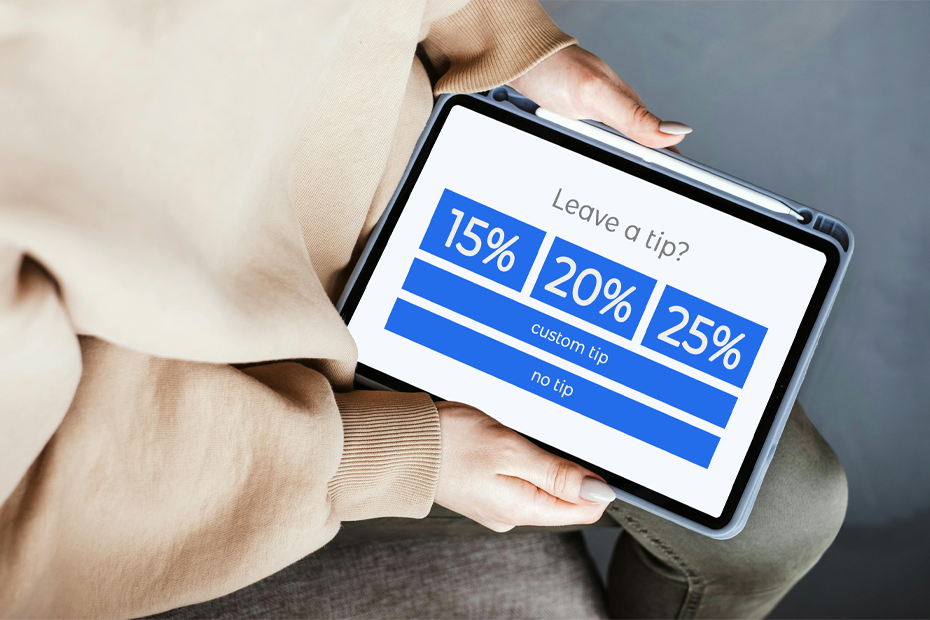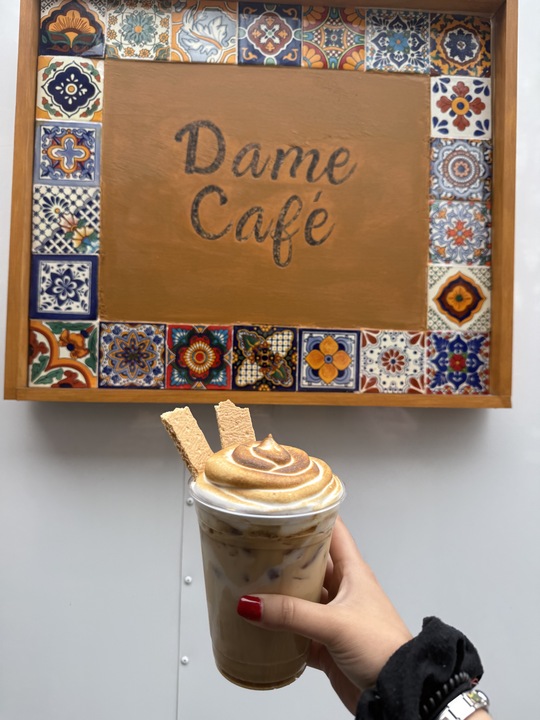The flip of the iPad and three options are shining at you. 10%. 15%. 20%. Which will you choose? The pressure is on. People are waiting behind you. The cashier is trying to look away while also side-eyeing to see how much you think their service is worth.
Although how much to tip seems like an easy question on the surface, the answer is complex and honestly…awkward.
However, the question is coming up more and more often with nearly 75% of remote food and beverage transactions asking for gratuity.
According to the Journal of Economic Perspectives, the tip percentage has grown over the past few centuries. By 1900, the common courtesy to tip was 10%. By the ‘90s, it rose to about 15%. Today, some travel guides recommend anywhere from 15% to 25%.
Tom Wiseman, UT’s chair of the Economics Department and professor, said the change in technology in the food industry is a reason for tip amounts rising as it creates extra pressure on the consumer.
“In the past (when) tipping waiters at restaurants, the tip would be left on the table,” Wiseman said. “There wasn’t a direct interaction with the server who’s getting the tip. Now, it’s much more common that you pay the server directly like a credit card scanner. You choose the tip right in front of the person who’s being tipped.”
Consumers not carrying cash have also caused this transition to new technology, said barista and journalism sophomore Kylee Howard.
“No one really carries cash anymore,” she said. “They have Apple Pay, or they use their card.”
Some businesses have even switched from a tip jar to a more direct point-of-sale system. Former Cabo Bob’s employee and Rhetoric and Writing senior Mimi Calzada saw an increase in tips after Cabo Bob’s tip system changed.
“We got an upgraded POS system to the one that has a screen that faces both the cashier and the customer that gets the tip prompt,” Calzada said. “After we got the POS system, tips tripled.”
New systems also bring another hurdle for customers: suggesting tip amounts.
“The payment technology often has suggested tips,” Wiseman said. “The companies can provide more guidance of what they think the standard should be, which pushes the tip up.”
Calzada said she thinks this seems like a coercive technique since companies can set the tip suggestions higher or make it more difficult for customers to tip less.
“They make the ‘no tip’ or the ‘custom tip’ button real small so that you can’t see it,” she said. “You feel the pressure of everybody behind you waiting. It’s definitely a manipulative tactic.”
However, these techniques might not be done out of harm but out of survival for businesses. Wiseman said the growing tips help to pay off higher costs and inflation.
“In times of inflation, company costs are going up,” he said. “Their push to raise prices passes the cost increase onto customers. But, they hate to do that because they don’t want to lose business. So, if they can shift the increase (to larger tips) rather than the price on the menu, that’s hiding the price increase.”
Large portions of America’s wait staff have relied on tips since Congress created the tipping credit in the 1960s, which allowed companies to pay less than minimum wage to workers earning tips.
In order to compensate for lack of pay from employers, Americans made tipping a common practice when going out to eat, giving them the reputation as some of the best tippers in the world according to CNBC.
But now, about two-thirds of Americans have a negative view of leaving gratuity, according to a Bankrate survey.
Wiseman said with the average tip percentage going up and more businesses asking for tips, more customers are inclined to have a negative viewpoint on gratuity.
Many people, including Calzada, have their own philosophy on how to approach this awkward situation.
“Am I prepared to be (tipping) now? Yes? I’m gonna go ahead and go out to eat. No? Let me just make some ramen at home.” she said. “Am I having sympathy for this person who is being put in a really shitty position? That’s where it comes down to for me.”
Howard said she often bases her tipping decisions off whether the restaurant is a small business or a corporation since the person who owns that business is typically working there, and she wants to give back.
However, gratuity isn’t just a number on the screen.
The number of workers’ wages depending on tips is steep. In 2022, there were over eight million food service employees including servers, food prep and bartenders, according to the U.S. Bureau of Labor Statistics.
From an economics standpoint, Wiseman said it’s a mixed story as to whether businesses or consumers should bear the responsibility of employees’ wages.
“Customers pay more if they think they got good service, obviously incentivizing good service,” he said. “On the other hand, tips are often tied to things other than the quality of the service, so there’s a fairness concern as well.”
Calzada and Howard believe it’s the business’s responsibility to provide a livable wage to employees, instead of depending on the instability of tips. Both said they would rather have either an automatic service charge or an increase in costs, with Calzada citing Alamo Drafthouse’s 18% automatic gratuity to ensure all employees earn higher wages.
With tipping culture evolving through new technology and ever-increasing costs, will the future of tipping be defined by compassion or convenience?
































